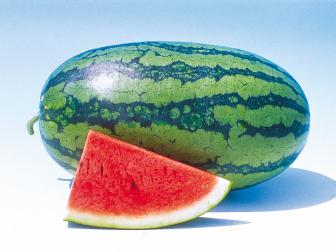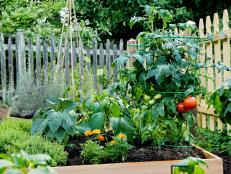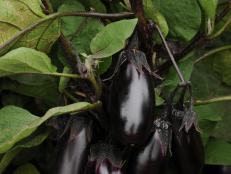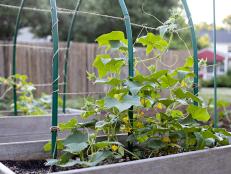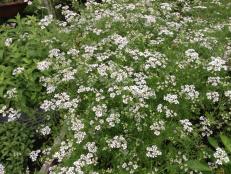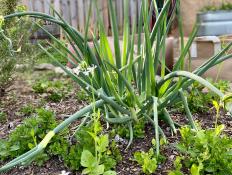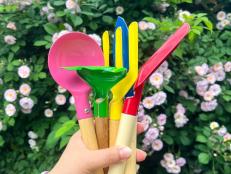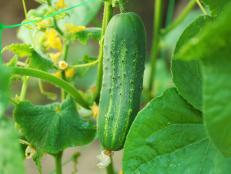Companion Planting for Watermelon
Grow a better crop of watermelon by trying out companion planting techniques.

Few things in life are as refreshing as a sweet, juicy watermelon after a hot summer day spent working in the garden. Although it’s easy to grow watermelon from seed or transplants, many gardeners struggle to get their melons to produce fruit before the arrival of cool fall weather. This season, try using companion planting to improve plant health and attract pollinators to improve fruit set.
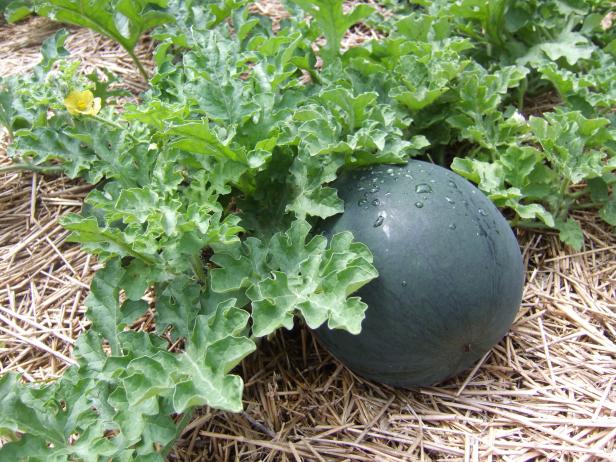
Julie Martens Forney
Watermelon and other melons, including cantaloupe and musk melon, need plenty of sunshine to yield well. Avoid planting them near other crops that will shade them. Include flowers like dill, chamomile, cosmos and pineapple sage to attract predatory insects that eat melon pests, including beetles, caterpillars and aphids.
What is Companion Planting?
Companion planting promotes plant diversity to improve plant health, fill available niches, and feed the garden ecosystem. Pair watermelon with certain types of plants to maximize plant health and productivity by supporting beneficial organisms (including some species of insects, spiders, fungi, and bacteria), discouraging pests, and limiting disease pressure.
- Energy-rich pollen and nectar from flowering insectary plants attract beneficial pollinators and predators of pests to the garden. Attracting pollinators is especially important for watermelon and its cucurbit relatives, as they depend on visits from pollinators to produce fruit. Watermelon plants develop separate male and female flowers. The male flowers usually appear before the female flowers, and there are typically many more male than female flowers. Although both types of blooms produce pale, yellow petals, a female flower will have an ovary just behind the petals that looks like a tiny watermelon.
- Banker plants provide food and shelter for predators of garden pests. Cover crops can serve as banker plants — especially in a no-till garden where the cover crop residue is left on the soil surface as a mulch. In addition to supporting predators, cover crops also feed beneficial organisms in the soil, build soil organic matter, and improve nutrient availability for the crop.
- Repellent plants discourage pests from feeding on crops by producing fragrant chemical compounds. Traditionally it was believed that insects disliked the aroma of repellent plants; however, new research suggests that “repellent” plants may actually work by camouflaging the fragrance of the desired crop, making it harder for pests to find watermelon growing in your garden.
- Trap crops, on the other hand, are more appealing to pests than watermelon. The goal with trap cropping is to lure pests away from the main crop. Mobile insects, like squash bugs, cucumber beetles, and their eggs should be removed from the trap crop to prevent them from spreading to the desired plants. Simply pick off these pesky pests and drop them in soapy water.
Watermelon Companions
- Cultivate flowering plants — including members of the aster family, like sunflowers, cosmos, coneflowers, and coreopsis, and herbs in the mint family, such as mint, oregano, thyme, and rosemary — to attract sweat bees and other pollinators.
- Grow cowpea to attract pollinators and predators of pests and to increase yields. Sow cowpeas 3 or 4 weeks before planting watermelon so that both crops will be blooming at the same time.
- Plant buckwheat, cowpeas, or sweet clover to attract predators of watermelon pests.
- Interplant with radish, tansy, and nasturtium to discourage cucumber beetles from feeding on watermelons.
- Grow a trap crop of ‘Blue Hubbard’ squash to lure pests like squash bugs and cucumber beetles away from watermelon vines.
- Plant watermelon after a cover crop of hairy vetch. Cut back vetch before it begins to bloom and leave the residue on the garden bed as a mulch to diminish diseases like Fusarium wilt, anthracnose, and gummy stem blight. A hairy vetch cover crop can also improve soil quality, increase nutrient availability, and increase watermelon yield. To sweeten the deal, some research suggests that watermelon fruits grown after hairy vetch have a sugar content 10% higher than conventionally grown watermelon.
- Grow watermelon after a cover crop of winter wheat to suppress weeds and conserve moisture.
How to Plant and Grow Watermelon
These sweet summer treats are easy to grow. All you need is a seed, sun, heat and water.
Bad Neighbors for Watermelon
Watermelon vines can stunt the growth of neighboring seedlings, not only because their leaves cast shade on the soil, limiting competing plants’ access to sunlight, but also because watermelon exude chemicals that inhibit seed germination and seedling growth — these are called allelopathic chemicals. This quality, called alleopathy, makes watermelons bad neighbors for new successions of vegetable crops that are planted by seed.
To make the most of watermelon’s allelopathic properties, try growing this vining fruit as a living mulch below tall, established plants like okra, tomatoes, or corn. The watermelon vines will limit competition from weeds as the vines spread out and cover the garden bed.
Tips for Growing Watermelon
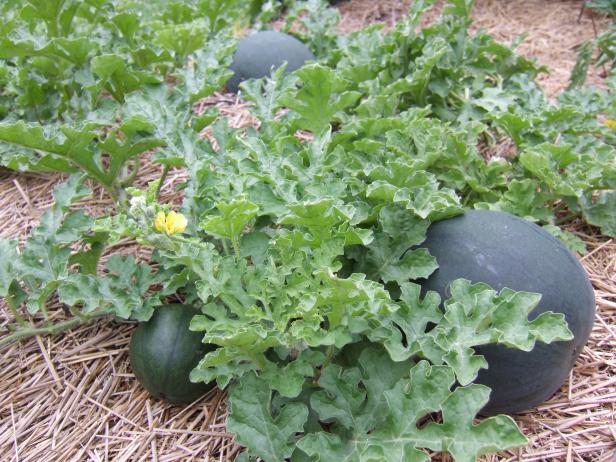
Julie Martens Forney
Bush ‘Sugar Baby’ watermelon grows to a tidy size, producing a vine that’s 2 to 3 feet long. Each vine produces two, 12-pound melons.
Growing watermelon is an exercise in patience. Most varieties of this juicy, sweet fruit take between 70 to 100 days from planting to harvest. Watermelon depends on hot and sunny conditions to grow and resents cool spring and fall weather, which means that when it comes to planting, timing is everything — especially for northern gardeners.
Watermelon can be started from seed or transplants. Hold off on sowing seed or planting seedlings outdoors until any danger of frost is well past. Gardeners with a shorter growing season can plant seeds indoors in pots 4 to 6 weeks before the last frost and transplant into the garden when the weather warms up. Many garden centers and nurseries will have healthy, vigorous seedlings available for purchase in the spring.
Like most annual vegetables, watermelon needs 6 or more hours of direct sunlight a day. Plant watermelon in a bright, sunny spot that has rich, well-drained soil. Amend the garden bed with compost or manure before planting. Build up hills or a small berm to improve drainage and to raise soil temperatures for watermelon roots.
Give watermelon plenty of room to stretch out. Distance requirements will differ between varieties, so check your seed packet to be sure that you’ve given your plants enough space. Watermelon vines can be grown up a trellis, although developing fruits will need to be supported with a sling.
Tips for Crop Rotation
Watermelon and its cucurbit relatives — like squash, pumpkin, zucchini, cucumbers, and other melons — are susceptible to the same pests and diseases, which means that it’s best to give the bed a break (at least one and preferably three seasons) between growing these crops in the same spot. Large gardens can group these related crops in one big plot and cultivate in a different area each season.
However, vining melons and squash take up a lot of space, which means that traditional crop rotation for these plants may not be practical for many home gardeners. Take note of what plants have grown in each region of the garden, and do your best to leave at least one season between cucurbits. To mitigate some pest pressure, remember to remove all of the plant debris from watermelon, squash, and their relatives at the end of the growing season.

.-Battle-on-the-Beach-courtesy-of-HGTV.-.jpg.rend.hgtvcom.196.196.suffix/1714761529029.jpeg)




